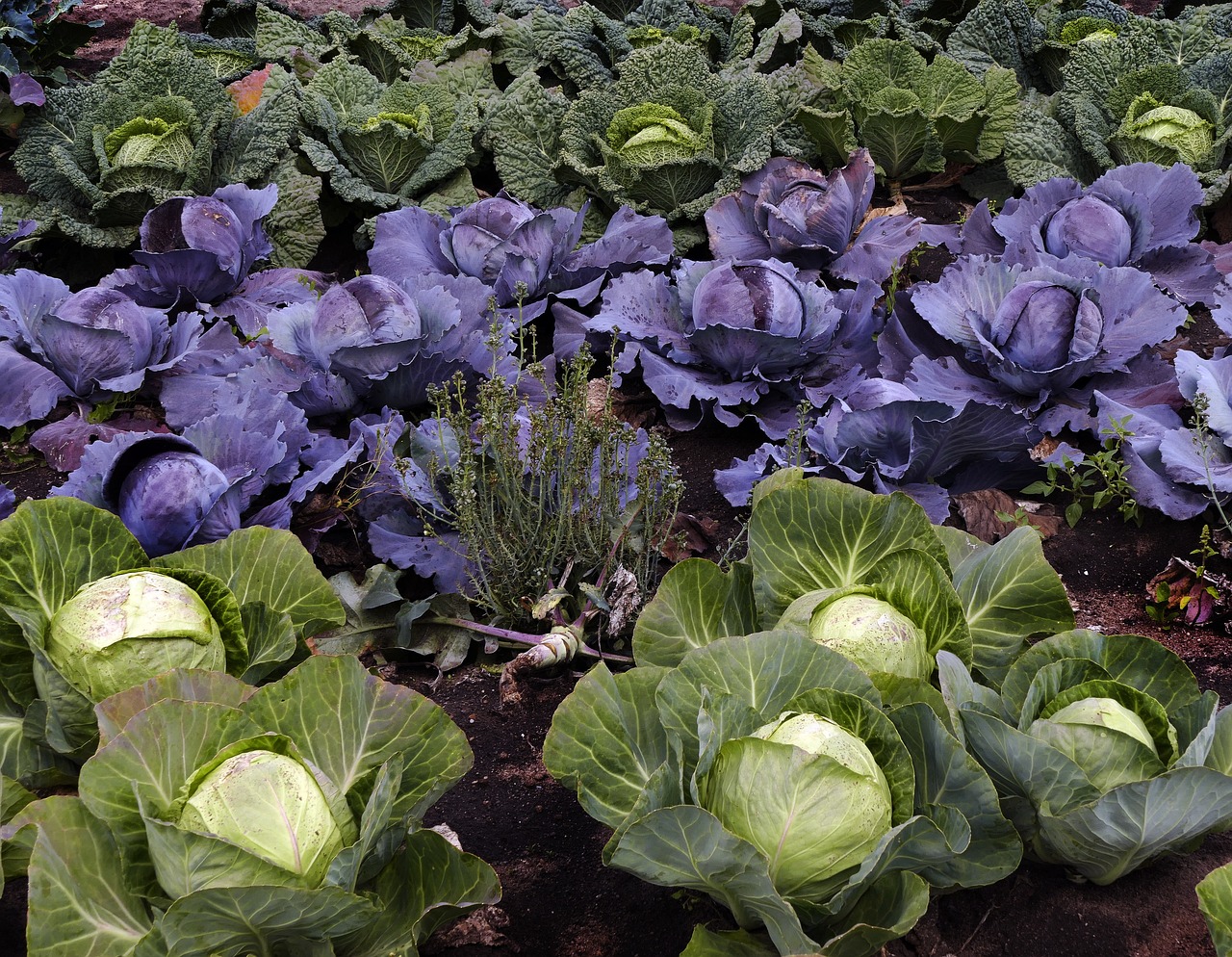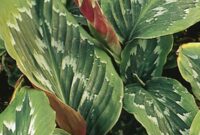Companion planting is a time-honored gardening technique that involves strategically planting different crops together to maximize their mutual benefits.
In this blog post, we’ll delve into the world of companion planting specifically tailored for growing healthy cauliflower.
This method goes beyond conventional gardening practices by harnessing the power of nature to create a harmonious garden ecosystem.
The Benefits of Companion Planting
Companion planting offers a range of advantages for your cauliflower crop. By carefully selecting the right companion plants, you can:
- Boost Yield: Certain plants complement cauliflower’s growth, leading to healthier and more abundant harvests.
- Natural Pest Control: Many companion plants act as natural pest repellents, reducing the need for chemical pesticides.
- Enhance Flavor: Some companions can enhance the flavor of cauliflower and provide culinary versatility.
- Improve Soil Health: Certain companion plants contribute to soil fertility, a vital factor in successful cauliflower cultivation.
Now, let’s explore the top 11 must-have companion plants that will help you grow robust and healthy cauliflower.
1. Nasturtiums: Cauliflower’s Colorful Companions
Nasturtiums are not only visually stunning with their bright, edible flowers but also serve as excellent companions for cauliflower.
Pest Repellent Properties
Nasturtiums release natural compounds that deter common pests like aphids, whiteflies, and cabbage moths—known culprits when it comes to cauliflower damage.
Vibrant and Edible Flowers
These vibrant blooms not only add a splash of color to your garden but are also edible. They make a delightful addition to salads or as a garnish for cauliflower dishes.
Planting and Care Tips
To harness the power of nasturtiums in your cauliflower garden, pl
ant them around the perimeter or intersperse them throughout the cauliflower bed. Nasturtiums thrive in well-draining soil and prefer full sun to partial shade. Regular deadheading (removing spent flowers) encourages more blooms and keeps the plants looking tidy.
2. Marigolds: Natural Pest Protectors
Marigolds are renowned for their vibrant orange and yellow blossoms, but their true beauty lies in their ability to protect your cauliflower from unwanted pests.
Pest Deterrent Qualities
Marigolds emit a scent that repels harmful insects like aphids, nematodes, and whiteflies—common threats to cauliflower crops.
Selecting the Right Marigold Varieties
Not all marigolds are created equal when it comes to companion planting. Choose French or African marigold varieties for the best pest-repelling results.
Planting and Maintenance
Plant marigolds around the cauliflower patch or as a border. They thrive in well-drained soil and require minimal care once established. Deadheading spent blooms encourages continuous flowering throughout the season.
3. Dill: Enhancing Flavor and Repelling Pests
Flavorful and Functional
Dill is more than just a flavorful herb that pairs well with cauliflower in the kitchen—it’s also a valuable companion plant in the garden.
Complementary Flavors: When grown near cauliflower, dill imparts its unique aromatic qualities to the nearby plants, enhancing the overall flavor of the cauliflower. This combination opens up a world of culinary possibilities, from roasted cauliflower with dill to creamy dill-infused soups.
Natural Pest Repellent: Dill has a dual role as a pest repellent. It deters certain insects that can harm cauliflower, such as aphids and cabbage loopers. This makes it a win-win addition to your cauliflower patch.
Planting Strategies
To maximize the benefits of dill in your cauliflower garden, consider the following planting strategies:
Proximity Matters: Plant dill close to your cauliflower plants, so they can influence each other’s growth and flavor. Aim for a distance of about 12-18 inches between dill and cauliflower.
Sun and Soil Requirements: Dill thrives in full sun and well-draining soil. Ensure that both dill and cauliflower receive adequate sunlight to flourish.
Complementary Pairings: Explore culinary pairings that showcase the combination of dill and cauliflower. Experiment with recipes like dill-infused cauliflower rice or cauliflower and dill pickles for a garden-to-table experience.
By strategically incorporating dill into your cauliflower garden, you can enjoy not only the delicious flavors it adds to your meals but also the pest-repelling benefits it offers to keep your cauliflower healthy.
4. Radishes: Breaking Up the Soil and Warding Off Insects
Soil Health and Pest Management
Radishes are unsung heroes in the world of companion planting, particularly when it comes to cauliflower.
Soil Aeration: Radishes have a unique ability to break up compacted soil with their strong taproots. This natural soil aeration benefits cauliflower by improving root growth and nutrient uptake.
Pest Deterrants: Beyond their soil-enhancing qualities, radishes also serve as a natural defense against certain pests. They are known to deter root maggots and aphids, which can otherwise harm your cauliflower crop.
Intercropping Strategies
Intercropping is a clever technique that involves planting two or more different crops in close proximity to maximize space and resources. When it comes to cauliflower and radishes, here are some intercropping strategies to consider:
Interplanting: Plant radishes in between cauliflower rows or as a border around your cauliflower patch. This not only aids in pest management but also optimizes space utilization.
Sequential Planting: Consider planting radishes before your cauliflower crop to break up the soil and create better growing conditions for the latter. Harvest the radishes before they mature fully to avoid competition for resources.
Complementary Harvests: Radishes have a shorter growing season than cauliflower. This means you can enjoy an early harvest of radishes while waiting for your cauliflower to mature.
By incorporating radishes into your cauliflower garden, you not only enhance soil quality but also create a natural pest deterrent system that benefits your cauliflower plants.
5. Sage: The Wise Choice for Cauliflower Companion
A Sage Companion
Sage, with its aromatic leaves and rich history, is a wise choice when it comes to companion planting for cauliflower.
Repelling Cabbage Moths: One of sage’s remarkable qualities is its ability to repel cabbage moths, a common pest that can wreak havoc on cauliflower crops. Planting sage near your cauliflower can act as a natural barrier against these unwanted visitors.
Enhancing Flavor: Beyond its pest-repelling powers, sage can also elevate the flavor of your cauliflower dishes. Whether you’re roasting, sautéing, or steaming cauliflower, a sprinkle of fresh sage leaves can add depth and complexity to the flavor profile.
Strategic Placement
To make the most of sage as a companion to cauliflower, consider the following placement strategies:
Surrounding Cauliflower: Plant sage strategically around your cauliflower bed or intersperse it among the cauliflower plants. This way, it provides ongoing protection against cabbage moths.
Full Sun Exposure: Sage thrives in full sun, so ensure that it receives at least 6-8 hours of direct sunlight daily. Well-draining soil is also essential for healthy sage growth.
Pruning and Maintenance
Sage plants benefit from regular maintenance to keep them productive and healthy:
Pruning: Prune your sage plant regularly to encourage bushier growth. Pinch back the tips of the stems and remove any dead or yellowing leaves.
Harvesting: Harvest sage leaves as needed throughout the growing season. Be sure not to take more than one-third of the plant’s foliage at once, as this can stress the plant.
By incorporating sage into your cauliflower garden, you not only deter pests but also enhance the culinary potential of your cauliflower dishes with its fragrant leaves.
6. Onions and Garlic: Keeping Pests at Bay
Natural Pest Repellents
Onions and garlic, close relatives in the Allium family, are known for their pungent aromas and versatile culinary uses. They also have a crucial role to play as natural pest repellents in your cauliflower garden.
Pest-Repelling Properties: Both onions and garlic emit strong odors that deter a wide range of garden pests, including aphids, cabbage worms, and onion flies. Planting them near cauliflower acts as a protective shield against these invaders.
Interplanting Strategy: To harness their pest-repelling powers, interplant onions and garlic throughout your cauliflower patch. This not only keeps pests at bay but also optimizes garden space.
Culinary Combinations
The benefits of interplanting onions and garlic extend beyond pest control—they offer exciting culinary possibilities:
Flavorful Pairings: Combine your homegrown cauliflower with onions and garlic in a variety of recipes. From roasted cauliflower with caramelized onions to creamy garlic mashed cauliflower, the options are endless.
Complementary Harvests: Onions and garlic have longer growing seasons than cauliflower. Harvest them as needed, and their absence won’t disrupt your cauliflower’s growth.
By integrating onions and garlic into your cauliflower garden, you create a dynamic environment that not only deters pests but also enhances your culinary endeavors.
7. Borage: A Beneficial Beauty
Garden Enhancement with Borage
Borage, with its brilliant blue blossoms and unique characteristics, can be a beautiful and beneficial companion for your cauliflower.
Soil Health and Pollinator Attraction: Borage is known for its positive impact on soil quality. Its deep taproots help break up compacted soil, improving aeration and drainage. Moreover, borage flowers are a magnet for pollinators like bees and butterflies, which can increase pollination rates for your cauliflower and other garden crops.
Unique Characteristics: Borage plants have distinctive, fuzzy leaves and star-shaped flowers that range in color from vibrant blue to pink. These charming features not only add visual interest to your garden but also make borage a standout companion plant.
Planting Borage
Here’s how to make the most of borage alongside your cauliflower:
Strategic Placement: Plant borage near your cauliflower to promote soil health and attract pollinators. Borage’s long taproots can help improve the structure of the soil around your cauliflower plants.
Sun and Soil Requirements: Borage thrives in full sun and well-draining soil. It’s a relatively low-maintenance plant, making it a great addition to your garden.
Self-Seeding: Borage is known for self-seeding, which means it can return year after year with minimal effort on your part. Be prepared for a self-sustaining population in your garden once you introduce borage.
By incorporating borage into your cauliflower garden, you not only enhance soil quality but also create a visually appealing and pollinator-friendly environment.
8. Spinach: Space-Saving and Nutrient-Rich
Maximizing Space with Spinach
Spinach is a space-saving champion when it comes to companion planting with cauliflower, offering both culinary delights and nutrient benefits.
Space-Saving Qualities: Spinach grows as a low, leafy plant that doesn’t compete for vertical space with cauliflower. Interplanting these two crops maximizes your garden’s space efficiency.
Nutrient-Rich Combination: Growing spinach and cauliflower together allows you to harvest nutrient-rich greens alongside your cauliflower. Spinach is packed with vitamins and minerals, making it a valuable addition to your meals.
Planting Success
Here are some tips to ensure a successful spinach-cauliflower combo:
Interplant Strategically: Plant spinach between your cauliflower rows or in the spaces between cauliflower plants. This makes the most of available space and resources.
Harvest Leaf by Leaf: Spinach can be harvested leaf by leaf as it matures, allowing you to enjoy a steady supply of fresh greens while waiting for your cauliflower heads to develop.
Ideal Growing Conditions: Spinach prefers cool temperatures and well-draining soil. Ensure it receives adequate moisture and partial shade during hot weather to prevent bolting (going to seed prematurely).
Incorporating spinach into your cauliflower garden not only maximizes your garden’s productivity but also provides you with a nutritious and delicious addition to your meals.
It’s a win-win for gardeners and food lovers alike.
9. Chamomile: A Relaxing Garden Companion
Garden Relaxation with Chamomile
Chamomile, known for its soothing properties, can be a calming addition to your cauliflower garden while also benefiting your crops.
Flavor Enhancement: Chamomile improves the flavor of cauliflower when planted nearby. The mild, apple-like scent of chamomile flowers can subtly infuse your cauliflower with a delightful undertone.
Natural Fungicide: Chamomile has mild fungicidal properties, which can help protect your cauliflower from fungal diseases. It acts as a preventive measure, keeping your plants healthy.
Enjoying Chamomile Tea
Chamomile has a timeless tradition as an herbal tea. Here’s how you can make chamomile tea using homegrown chamomile:
Harvesting Chamomile: Harvest chamomile flowers when they are fully open. You can do this by gently snipping the flower heads.
Drying Chamomile: Spread the harvested flowers in a single layer on a clean, dry surface. Allow them to air-dry completely.
Brewing Chamomile Tea: To make chamomile tea, simply steep a tablespoon of dried chamomile flowers in hot water for about 5 minutes. Strain, and your soothing chamomile tea is ready to enjoy.
Caring for Chamomile Plants
To make the most of chamomile as a garden companion, consider the following care tips:
Sun and Soil Requirements: Chamomile thrives in full sun and well-draining soil. Ensure it receives adequate sunlight for healthy growth.
Deadheading: To encourage continuous blooming and prevent self-seeding, deadhead spent chamomile flowers regularly.
By incorporating chamomile into your cauliflower garden, you not only enhance your culinary experience but also create a tranquil garden atmosphere.
10. Swiss Chard: Dual-Purpose Companion
Shade and Nutrition with Swiss Chard
Swiss chard, with its vibrant leaves and versatility, serves as a dual-purpose companion for cauliflower.
Shade Provider: Swiss chard’s large leaves can provide welcome shade for cauliflower during hot summer months. This shade helps protect cauliflower from scorching sun and bolting.
Nutrient-Rich Leaves: Swiss chard leaves are a nutritional powerhouse, rich in vitamins, minerals, and antioxidants. Harvesting Swiss chard alongside cauliflower ensures a bountiful supply of healthy greens.
Planting and Maintenance
Here are considerations for successfully integrating Swiss chard into your cauliflower beds:
Interplant Strategically: Plant Swiss chard around your cauliflower to offer shade. Consider planting rows of Swiss chard to the south or west of your cauliflower to maximize shading during the hottest parts of the day.
Harvesting Swiss Chard: Harvest Swiss chard leaves as needed, beginning with the outer leaves. Regular harvesting encourages continuous leaf production throughout the growing season.
Ideal Growing Conditions: Swiss chard thrives in well-draining soil and partial to full sun. Adequate moisture and regular fertilization will support healthy growth.
By including Swiss chard in your cauliflower garden, you create a multi-functional garden space that optimizes both shade and nutrition, ensuring your cauliflower’s well-being and your culinary delight.
11. Tansy: A Natural Pest Deterrent
Pest-Repelling Tansy
Tansy, with its vibrant yellow flowers and aromatic foliage, can serve as a potent natural pest deterrent in your cauliflower garden.
Pest-Repelling Properties: Tansy emits a strong scent that repels a variety of common garden pests, including ants, aphids, and cabbage worms. Planting tansy near your cauliflower acts as a protective shield against these intruders.
Border Planting Strategy: Tansy can be strategically used as a border plant for your cauliflower garden. Plant it around the perimeter or intersperse it between cauliflower rows to create a protective barrier.
Managing Tansy Growth
While tansy offers pest-repelling benefits, it’s essential to be aware of its invasive nature:
Vigilant Control: Tansy can spread rapidly and become invasive if not managed properly. Regularly monitor its growth and trim or prune it to keep it in check.
Containment Measures: Consider planting tansy in containers or designated areas to prevent its unchecked spread throughout your garden.
Caution: Due to its invasive potential, tansy may not be suitable for all garden settings. Exercise caution and consider local regulations regarding invasive plants before planting tansy.
By incorporating tansy into your cauliflower garden, you can harness its natural pest-repelling properties while also being mindful of its invasive tendencies.
Conclusion
Companion Planting: A Recipe for Healthy Cauliflower
In this exploration of companion plants for cauliflower, we’ve uncovered an array of options that offer a multitude of benefits. From pest control to flavor enhancement, these companion plants can transform your cauliflower garden into a thriving ecosystem. Let’s recap the key benefits of companion planting for cauliflower:
- Pest Control: Many companion plants deter common pests, reducing the need for chemical pesticides.
- Flavor Enhancement: Certain companions can enhance the flavor of cauliflower and provide culinary versatility.
- Soil Health: Some companion plants contribute to soil fertility, crucial for successful cauliflower cultivation.
- Space Optimization: Interplanting allows you to maximize space and resource efficiency in your garden.



